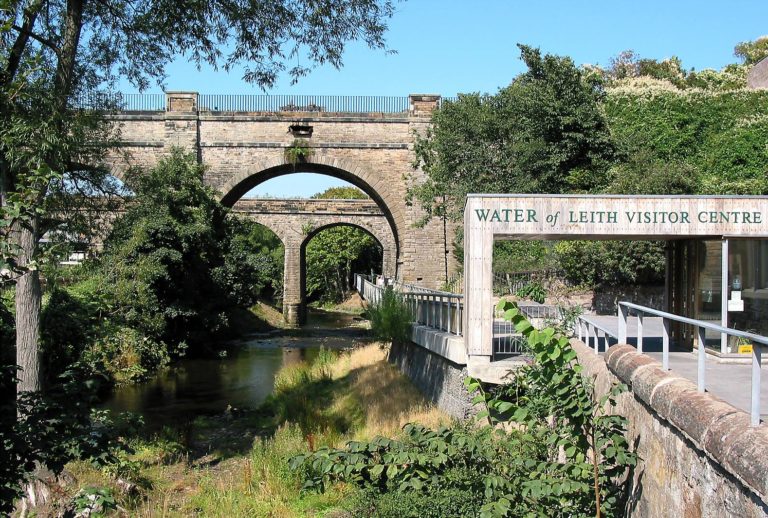Welcome to the start of the Water of Leith Walkway. From here the course of the river can be followed on foot, by bicycle or even horseback all the way to Leith some 12 and a half miles or so from here; although if by horseback, perhaps not quite all the way, as there are steps and busy streets to negotiate!
On your left is a small wildlife garden, built by trust volunteers in 2007, in memory of Dr Graham Priestley, a founding father of the Water of Leith Trust, and the first trust manager. Do take time to read the inscription on the small cairn halfway down the path through the garden. Incidentally, Graham Priestley and the speaker hauled the millstone you see at the seating area out of the river about 10 years before the garden was built.
Although this is the start of the Walkway to Leith, it is not, of course, the start of the river. The Water of Leith rises from the Colzium Springs some 13 miles southwest of here above Harperigg Reservoir in the Pentland Hills. Adjacent to the start here is Balerno High School, built-in 1984 on the site of the railway goods yard, the Walkway follows the route of the old Balerno Branch Railway line to Slateford. This Branchline was opened in 1874 and remained in use until 1968.
Balerno marks the end of a chain of villages that grew in line with the development of industry along the river which originally was a convenient source of power. The name Balerno is said to derive from Byrney – meaning a well-sheltered place, but perhaps more clearly from the 15th century when the area was in the Barony of Balernoght. Originally the centre of the local farming community by the 1800s, the area had seen a big rise in its milling industry. There were about 10 mills generating a variety of products including sawmills, grain and barley mills, threshing, spinning, paper-making and waulking, which is the process of softening cloth, by soaking and beating. There is little evidence of milling left and most of the weirs are no longer visible, but as you walk downstream you will pass the ruins of Newmills Grain Mill which operated for some 300 years. Between here and Currie you will pass Kinauld Farm – a former Waulking Mill and tannery – and the site of the old Balerno Paper Mill. On the early part of this walk down to Slateford, you will see many bridges, cuttings, and embankments which are reminders of the former railway. Of particular interest are the retaining embankment walls just after the Bowling Club which a young man from Currie first used as climbing practice. That young man was Dougal Haston who went on to be a world-renowned climber and the first Briton to climb Everest.
Keep an eye on the river for its interesting wildlife. Herons are common, as are Dippers who love to nest under the bridges, and vigilance could well be rewarded by the unforgettable glimpse of the Kingfisher.
The next audio point is by Currie Kirk.
Video created by Bryce Morrison.



